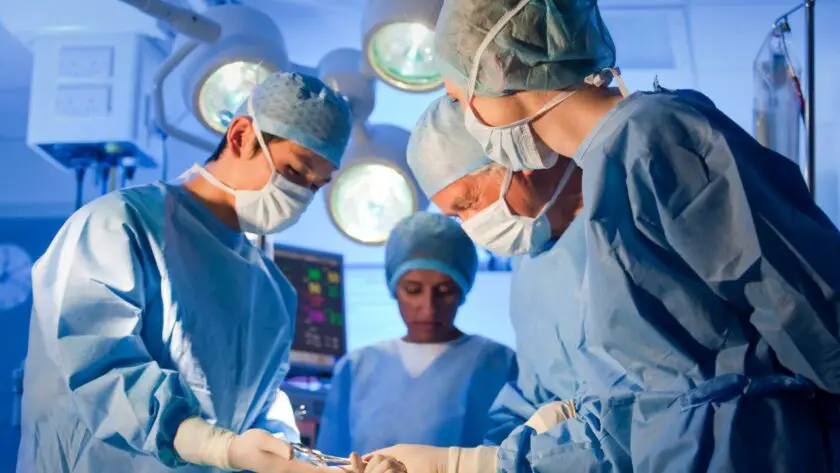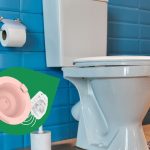What is the recovery time for hemorrhoids surgery? and what should you expect and what should you know about the post-operative course? Obviously, the surgery is done under anesthesia, so the patient’s main concern is what the following days will be like. The type of treatment strongly affects the post-operative course.
Classic intervention
So let’s first see what to expect when the surgery is conducted in the traditional way, according to the Phillips or Milligan-Morgan techniques, which involve the removal of a certain part of tissue at the anal level.
When these techniques are used, the pathological hemorrhoidal tissue is removed, leaving large mucous bridges between one wound and another. The wounds must necessarily heal by healing slowly, which can take 40 – 60 days of time.
Pain control
In the first few days, the biggest problem is pain, which can be particularly annoying at the time of defecation. It is therefore important to resort to the systematic use of drugs to reduce pain and inflammation.
These should not be taken only on the occasion of particularly important painful crises, but continuous intake is essential, at precise dosages and times, which allows the onset of pain to be stopped in the bud.
A therapy is usually set up which involves taking several drugs: a pure painkiller and a painkiller and anti-inflammatory drug are usually associated. In most cases, this association can solve the problem satisfactorily.
Locally, an anesthetic cream can be applied, even several times a day.
Avoid constipation
When it comes to Recovery time for hemorrhoids surgery, it is extremely important, especially in the first few days, to keep the stools soft, in order to avoid too strong a stimulus at the time of defecation. A big mistake is to drastically reduce feeding, in an attempt to postpone the defecation act as much as possible.
In this way, you only get to have the stools harder and more difficult to expel. A diet rich in water, fruit and vegetables is therefore important.
It is almost always necessary to resort to taking fiber supplements,ensuring that they are adequately hydrated by drinking plenty of water.
The purpose is precisely to keep the feces soft, causing less trauma at the time of their release. In particular cases, it may be necessary to take substances based on vaseline oil , to facilitate the expulsion of faeces.

Local hygiene
To facilitate wound healing, it is advisable to keep the area extremely clean and as dry as possible.
Slightly disinfectant detergent substances can be used , such as Amuchina, which however in the long run can significantly irritate the anal and perianal area. It is therefore good to use these substances only when the secretions are more abundant, for example in the morning or after defecation.
For daily hygiene, which must be repeated several times during the day, it is advisable to use delicate soaps, specially designed to respect already damaged skin as much as possible.
Furthermore, since the wounds tend to give a continuous secretion of serum, it is good to keep the part dry using small cotton gauzes, which must be changed frequently during the day
In the early days, it is quite common to observe small blood losses coming from the injured tissue. Bleeding normally tends to stop spontaneously, but it may be helpful to perform cold washings or compresses with gauze suitably wet with water and ice.
The risk of more conspicuous bleeding should always be kept in mind, especially in the first week. In this case it is advisable to notify the referring surgeon and perform a check-up as soon as possible.
Furthermore, especially in the first days after the operation, there may be an unpleasant sensation of urgency in expelling the faeces, which can sometimes be confused with a form of incontinence.
The muscles are not usually touched during the operation: what happens instead is that as soon as the faeces come into contact with the internal part of the still open wounds, the stimulus for their expulsion is immediate and particularly intense, such as to have to resort very quickly to the use of the services.
This symptom improves rapidly as the wounds heal, eventually disappearing after 2 – 3 weeks
Recovery time for hemorrhoids surgery, after the first week, the course is rapidly improving
The pain during the day becomes bearable and tends to disappear, but sometimes it is still present during and after defecation: painkillers should therefore be reduced gradually, bearing in mind that it may be necessary to continue taking them for a few more days.
The serous or blood serum secretion from the wounds is rapidly reduced, even if it continues to be good practice to keep the part dry with the use of gauze and to continue with particularly careful local hygiene.
A not rare event, which must be carefully researched and promptly corrected, is the onset of a sphincter muscle spasm, caused by the presence of the wounds. In these cases, the pain persists throughout the day and the sphincter contraction can lead the wounds to heal, creating a certain stenosis of the anal canal.
If this problem is detected after 20 – 30 days at the check-up, it can easily be solved in this phase with the use of suitable dilators at home.
It involves using small plastic cones, which are inserted for about 10-15 minutes at the anal level with a special lubricating anesthetic cream, in order to create a real stretching of the muscle fibres.
The consequence is that these will remain stretched and softer, immediately reducing the pain and allowing wounds to heal with good elasticity of the anal canal.
Prolapsectomy and hemorrhoidopexy according to Longo
With this type of technique, the stapler removes a circular tissue ring, completely inside the anal canal, repositioning the hemorrhoidal tissue upwards.
Thanks to this type of surgery, open wounds are usually not created towards the outside, so the course is almost always facilitated.
The pain is usually less intense, even if the stapler can sometimes include some deep muscle fibers in the section, also creating a certain sphincter spasm.
Furthermore, it may be necessary to place some manual stitches at the end of the operation to obtain good haemostasis: in this area the tissue can therefore be particularly stimulated and create a more significant painful stimulus.
Even with this technique, therefore, it is advisable to take adequate pain-relieving therapy in the first few days. Equally important is keeping the faeces soft to facilitate expulsion without overstimulating the area affected by the operation. Since there are no open wounds, local hygiene is simpler and secretions are always very scarce.
HELP OR THD dearterialization procedures
If the operation consists in pure dearterialization of the haemorrhoidal plexus under Doppler guidance, the course is actually simpler: post-operative pain is generally low and functional and work recovery much faster.
Very often, it is also necessary to correct the mucous prolapse associated with hemorrhoids: in these cases, the internal sutures that are made can give a sense of weight, more intense pain, difficulty in starting the expulsion of the faeces.
Obviously, the therapy must include a good pain-relieving coverage and the use of fiber supplements and drugs that allow the stools to be kept particularly soft.
Recovery time for hemorrhoids surgery, conclusions
Hemorrhoid surgeries are always annoying. A certain amount of pain must be taken into account, but it can be fought extremely effectively with the drugs available to us.
It is particularly important to regulate the bowel movement, in order to keep the stools soft and to facilitate their expulsion. Local hygiene must be treated in a particular way, especially after surgery conducted with the classic technique.
It is extremely important to carry out the checks foreseen in the post-operative period, in order to intervene quickly in the event of complications or a non-optimal course.
With these precautions, the course becomes easily manageable, and with healing a problem that has often been going on for years is definitively resolved.






